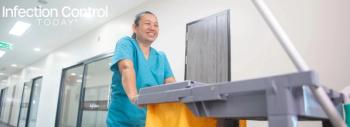
Researchers' Findings Offer Clue on How to Block Biofilm Shields of Bacterial Infections
An investigation by Southern Research biologists reveals for the first time that fatty acids known as oxylipins play a critical role in the formation of the biofilm shield that protects disease-causing bacteria from antibiotics.
A paper explaining this process, “Oxylipins produced by Pseudomonas aeruginosa promote biofilm formation and virulence,” published Dec. 8 in Nature Communications, a peer-reviewed scientific journal. Authors are Javier Campos-Gomez, PhD, research biologist in Southern Research’s Drug Discovery Division, and Eriel Martinez, PhD, a researcher in the Campos-Gomez Laboratory.
The findings have significant implications for understanding the formation of biofilms of bacterial pathogens with multiple antibiotic resistance mechanisms that are responsible for opportunistic infections in immunocompromised individuals and others, Campos-Gomez said.
“When the bacterium produces the oxylipins, the biofilm is stronger,” he said. “When you remove the capacity of the bacteria to produce oxylipin, it’s unable to make the biofilm, and the host organism is able to better fight off the infection.”
Oxylipins are common in nature, and have been studied extensively in animals, plants, algae, and fungi, but the biological functions of these oxygenated fatty acids in bacteria have largely remained unexplained.
Campos-Gomez and Martinez studied P. aeruginosa – an antibiotic-resistant bacterium that causes disease in plants and animals – to better understand how oxylipins act to promote the organization of bacterial colonies into a more complex organization known as biofilm, where the bacteria are embedded inside a matrix that protect them from antibiotics.
Their findings show that oxylipin production essentially changes the bacteria from a free-swimming state to what amounts to a fixed state, allowing for the formation of a colony.
The researchers’ in vitro and in vivo (Drosophila flies) studies indicated that this step increased the ability of P. aeruginosa to form biofilms. They also demonstrated that the oxylipins produced by the bacterium promoted virulence in the flies and in lettuce leaves.
“We think oxylipins are signaling molecules that probably trigger other known or unknown pathways responsible for the biofilm production,” Campos-Gomez said.
Oxylipin’s central role in promoting bacterial organization and biofilm formation may offer a promising opportunity for new medicines or therapies. The development of an oxylipin blocker could make a formerly antibiotic-resistant bacterial infection once again treatable, Campos-Gomez said.
As a next phase in their research, Campos-Gomez and Martinez plan to use Southern Research’s state-of-the-art high throughput screening facilities and large compound collection to identify agents that could act to block the production of oxylipin in bacteria.
In essence, understanding how bacteria rely on oxylipin production to create biofilms creates a new pathway for treatments that could save lives.
“It’s very difficult to treat these infections because of the biofilm, which acts as a shield against antibiotics and the host defenses, making it impossible for the infected host’s immune system to clear the bacteria from the body,” Campos-Gomez said. “The host is unable to handle the infection, and it’s often fatal.”
Source: Southern Research
Newsletter
Stay prepared and protected with Infection Control Today's newsletter, delivering essential updates, best practices, and expert insights for infection preventionists.






